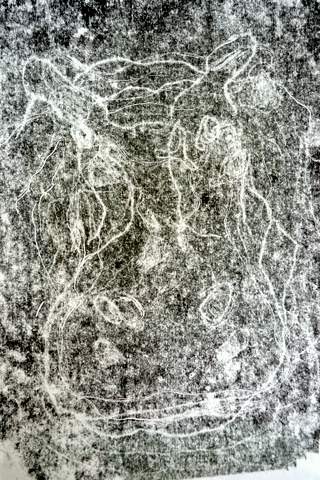Last week I spent a few hours making some sketch notes in the British Museum. I was really looking for dragon inspiration and as you would expect, I did find beautiful dragons in the Chinese Rooms, but I was also very taken with two fragmented horses from the Silk Road display.

My sketch of the spotted peg leg Tang period horse. It is “made of painted clay and wood and was found buried in a tomb near a major Silk Road administrative centre”.
“Horses on the move
The Tang dynasty (AD 609–918) was the golden age of the Silk Route. The capital, Chang'an (today Xi'an), at the eastern end, was the largest and most cosmopolitan city in the world at that time. Foreign traders, craftsmen and diplomats from all over took up residence in Chang'an and the other principal trading centres of China, which greatly benefited from the material trade and foreign cultural influences of these interactions.
But all of this could not have been possible without the beasts of burden which carried goods in either direction along the Silk Road.”
from The British Museum Website here
The other horse is a much smaller fragment of stucco. Initially it was the beautifully curving arch of the neck that I liked and then saw the two disembodied arms which, I like to think, are affectionately encircling the horse’s neck. Enigmatic and beautiful. I decided to spend this week on Beautiful Beasts exploring this little horse and its long gone rider.

My sketch from Thursday 13th Feb. The Museum label says
“Fragment of a horse.
Ming-oi, near Shorchuk, 8th-10th c. CE. Stucco with traces of paint.”

My sketchbooks and the Silk Road horses, the small stucco one is hidden behind frame of the case.
On Saturday 15th I returned briefly and made a couple more sketches

This is the little stucco horse again but this time I included the figure next to him. I am struck by how these physically unrelated pieces seem to have some sort of interaction.
As did the figure positioned by the two great Tang ceramic Horses which have the centre of the gallery in a glass case with camels and other figures.

A5 sketchbook pen and ink
This man has his hands raised as if holding the reins of one of these wonderful creatures and yet they don’t seem to have bridles.
I had sketched them on Thursday too ..irresistibly beautiful things with their thick necks and sloping bodies and those fine slender heads. Two larger visitors in the background

“Two horses and a groom, made of brown, green glazed earthenware, from the tomb of Liu Tingxun (d. 728).”









































